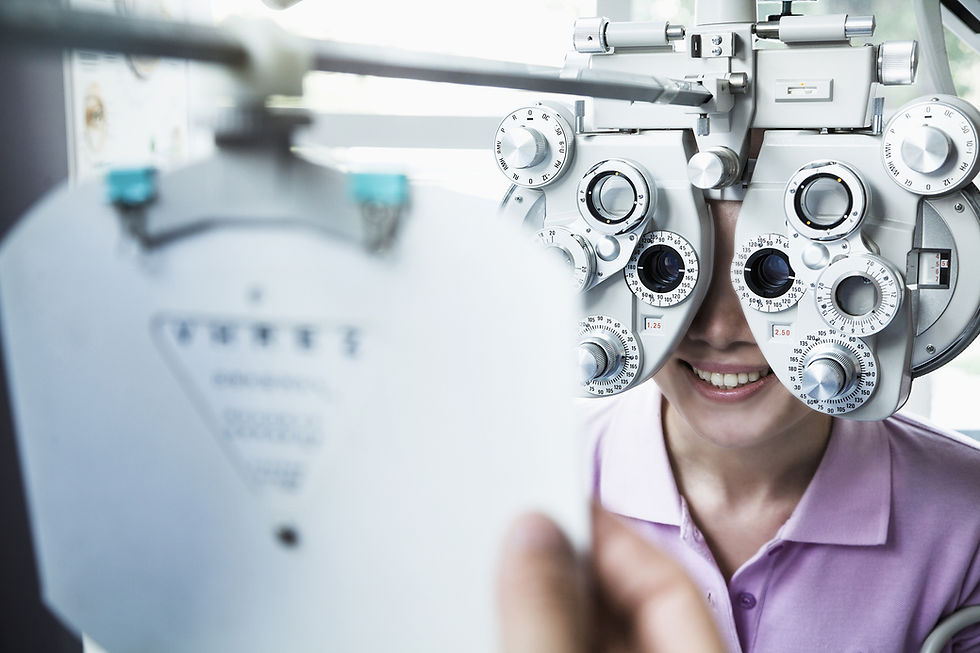What goes into a glasses prescription?

Ever wonder what information your eye doctor uses to determine the best glasses prescription for you?
There are many aspects of your visual system that must be considered when writing your prescription. First, your doc has to determine an objective starting point. She can do this a number of ways including analyzing the way light bounces off the back of your eyes. She uses a tool called a retinoscope to do this. Another method is using a machine that analyzes the curvature of the light waves bouncing off your eyes.

Your doc then collects your subjective responses through a series of different lenses in a meticulously procedural order. Some choices are blurry on purpose. These responses help her to determine how you're accustomed to using your eyes and how your brain processes visual information.
She also performs a "balance" between your eyes, ensuring that your prescription takes into account not only how your two eyes work individually but also how they function together. This is an important step to prevent eye strain and ensure comfortable viewing through your prescription.

Your doctor also collects information on the power and accuracy of your focusing system as warranted. This is especially important if you are prone to overworking your eye muscles. The doctor uses clues she gathers throughout the process to determine this. She may use a testing procedure to relax your eye muscles if needed to get a more accurate prescription. She may need to ask you extra questions about how you use your eyes.

Another aspect of your visual system that is tested is your eye alignment and posture and how well your eyes work together as a team. This data is also considered in determining the best prescription for you. This is part of the reason a comprehensive exam is necessary to determine your prescription. Missing part of this data could lead to a number of issues including eye strain, fatigue, double vision, blur, and simply an inadequate prescription for your visual needs.
Examination of the health of the eyes is necessary as ocular and general health issues could also alter your vision. For instance, your vision may be affected if you have diabetes, thyroid issues, high blood pressure, are taking certain medications, etc. Not to mention the importance of detecting and treating eye conditions that can change your vision such as dry eye, glaucoma, macular degeneration, and cataracts...just to name a few.

In the end, it your doctor's job to use her training, experience, and expertise to combine all this data to come to your final prescription. But that is not where the process ends. It is just as important to have the doctor and/or an experienced
optician help you select the appropriate lens style, material, and features. These choices need to fit your prescription, lifestyle, and visual goals. This is important because certain prescriptions do not work with certain frame sizes and shapes. Sometimes it’s not as simple as picking a frame that looks good.

Whatever frame you end up choosing also has to be fit properly on your face. The glasses must fit the size of your face, sit at the correct height, have the correct amount of curvature and tilt, and sit at the appropriate distance from your eyes. All of this must be fit before measurements such as optical center can be measured. This is critical to get the clearest and most comfortable vision. This is why you need an experienced optician to help in the selection process and to fit the frame while they are sitting on your face. They are experts in this area and will ensure that you will get the most out of your glasses.




















Comments